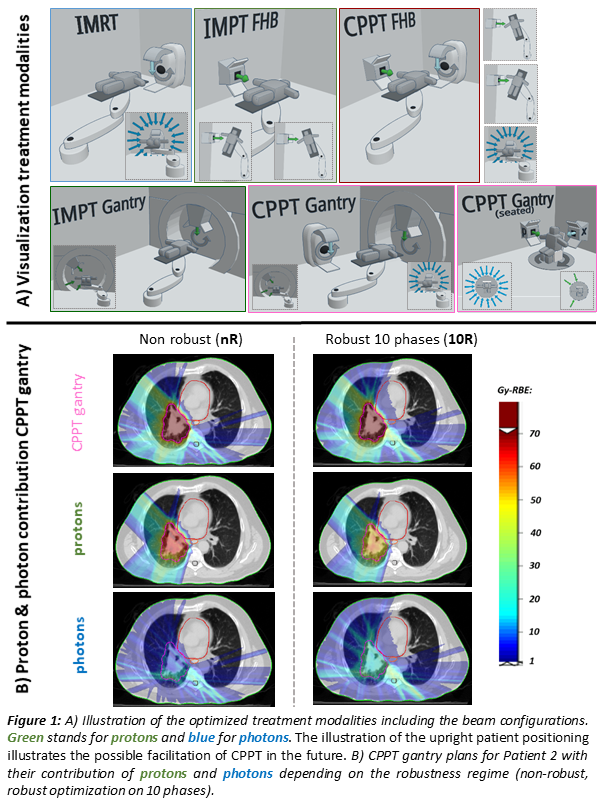Can combined proton-photon therapy improve plan robustness against breathing motion?
PD-0246
Abstract
Can combined proton-photon therapy improve plan robustness against breathing motion?
Authors: Florian Amstutz1,2, Damien C Weber1,3,4, Antony J Lomax1,2, Jan Unkelbach3, Ye Zhang1
1Paul Scherrer Institute, Center for Proton Therapy, Villigen, Switzerland; 2ETH Zurich, Department of Physics, Zurich, Switzerland; 3University Hospital Zurich, Department of Radiation Oncology, Zurich, Switzerland; 4Inselspital, Bern University Hospital, University of Bern, Department of Radiation Oncology, Bern, Switzerland
Show Affiliations
Hide Affiliations
Purpose or Objective
Optimally combined proton-photon therapy (CPPT) [1] is a promising option to increase access to proton therapy, e.g. by adding a fixed horizontal proton beam line (FHB) to a conventional Linac treatment room [2]. In this case, the photon component compensates for the reduced flexibility of a FHB compared to a gantry. Here we investigate another potential of CPPT for the treatment of lung cancer, to determine if the additions of a photon component in CPPT can increase plan robustness to motion, while preserving some of the dose benefits of protons.
Material and Methods
Two lung cancer patients were investigated, each with 4DCTs consisting of 10 phases (ph0-ph90). The PTV was defined by adding a 10 mm margin to the ITV (union of the tumor volumes of all phases). PTV sizes were 665.3 cc and 241.1 cc, and the tumor’s center of mass (COM) motion between inhale (ph0) and exhale (ph50) were 0.3 mm and 4.5 mm for the two patients. The COM motion for Patient 1 is small due to the large, central-located tumor, not because of the absence of general motion.
Five treatment plans were optimized for each patient: IMRT, IMPT FHB, CPPT FHB, IMPT GANTRY and CPPT GANTRY, the concepts of which are illustrated in figure 1A. Of note, the increased interest in upright patient positioning could facilitate CPPT approaches. For each plan, two different optimization regimes were used, non-robust (nR) optimization on ph0 and a stochastic robust optimization including all anatomies extracted from all phases ph0-ph90 (10R), each with equal probability. To evaluate and compare plan quality, all optimized doses were recalculated on all 4DCT phases. Moreover, the proton and photon contributions of the different plans and scenarios were compared, as were the DVHs and dose parameters of both the target and related organs-at-risk (OARs).
Results
The photon contribution to CPPT treatments increases in the robustly optimized plans (Figure 1B & 2A). In particular, the CPPT FHB approach for Patient 2 has a substantial contribution from photons after robust optimization, due to the lack of flexibility in compensating for anatomic changes between phases with a FHB only for protons. Figure 2B shows doses recalculated on ph50 for the different IMPT & CPPT GANTRY regimes. Robust optimization can mitigate the impact of the breathing motion for both modalities, but mitigation is more pronounced for robustly optimized CPPT. The DVH comparisons further emphasize this trend (Figure 2C), where the band of DVHs for CPPT GANTRY within the 10R scenario are barely separated from those for the nominal and IMRT plans. Integral dose however is still reduced compared to IMRT, which is also observed with reduced doses to the esophagus, the heart and the lungs.
Conclusion
CPPT planned with robust optimization, can mitigate the detrimental impact of breathing motion better than IMPT-only, while still reducing integral dose to the primary OARs compared to IMRT.
[1] Unkelbach et al. 2018 Radioth Oncol. 128
[2] Fabiano et al. 2020 Radioth Oncol. 145

